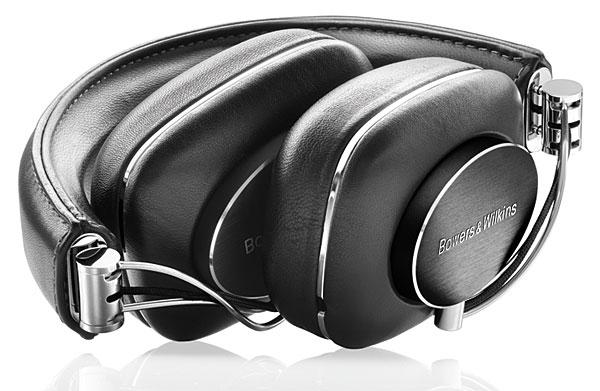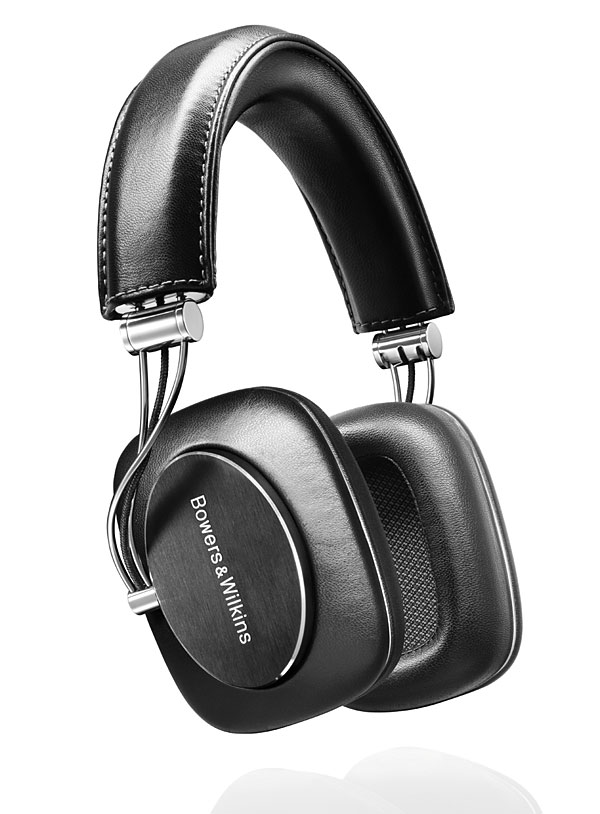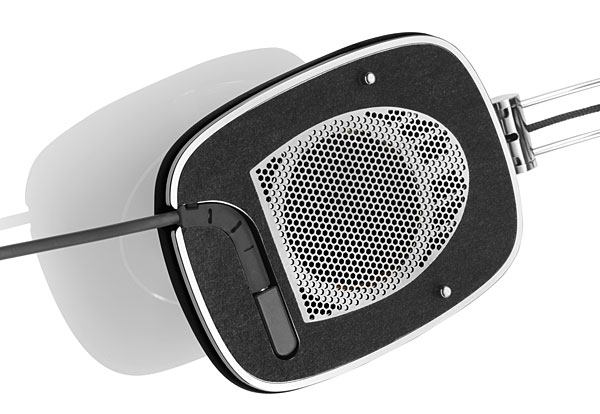Bowers & Wilkins P7 Headphone

AT A GLANCE
Plus
Bowers & Wilkins’ first
over-the-ear headphone
Unique styling
Lavish build quality
Minus
Not quite as graceful
looking as B&W’s onear models
THE VERDICT
The Bowers & Wilkins P7 continues B&W’s evolution as a world-class headphone manufacturer.
Over the last few years, we’ve seen quite a few speaker companies dip their toes into the headphone market, with inconsistent results. Sure, it’s easy to slap your logo on a pair of generic headphones, but Bowers & Wilkins didn’t do that. Their elegant design sense was immediately apparent with their very first headphone—the P5—and the sound was what you’d expect from Bowers & Wilkins. No wonder that headphone attracted a sizable cognoscenti following and turned on countless newbies to the glories of audiophile headphone sound.
The P7 is all new; it doesn’t share a single part with the P5, aside from the real sheepskin leather headband. Bowers & Wilkins’ head of engineering, Stuart Nevill, said the P7’s 40mm drivers are a lot closer to a speaker driver design than the simpler ones in the P5. You can take a peek at the drivers when you remove the magnetically attached ear pads, and you’ll also see a series of openings arrayed above the driver, which serve to balance air flow inside and outside the ear cup to smooth bass response. The P7 uses Sonafil to damp the driver’s back wave contained inside the ear cup; it’s the same material used to damp the midrange drivers in B&W’s flagship 800 Series speakers. The leather headband/ear pads and polished stainless steel construction impart a luxury feel to the design. The headphone’s impressive build quality is backed up with a two-year warranty, double the usual coverage.

You won’t see a cable jack on the P7’s ear cup, but don’t worry, the cable is user replaceable via a 2.5mm jack tucked under the ear pad. Two 50-inch-long cables are included, a plain one and one with an Apple-compatible inline microphone and three-button control. Over long-term use, every headphone’s ear pads will eventually wear out. That’s why B&W offers replacements for under $20 a pair. A beautifully finished travel bag is included with the P7.
I started my listening sessions comparing the P7 with the P5, with my iPod Classic. The P5 has been hugely successful, but it’s an on-ear; the over-the-ear P7s work on a larger scale. Soundstage dimensions expand, dynamic contrasts grow wider, and the bass plumbs deeper, so when I switched back to the P5, the sound felt a little cramped.
At home I used two headphone amps—a $249 Schiit Asgard 2 and the $2,000 Meridian Audio Prime—and heard great sounds with each. The difference was mostly a matter of transparency. The Prime upped the ante, proving the P7’s mettle as a serious high-end transducer. Feed it well, and the sound just gets better and better.

Still, the P7 is a sealed, closedback design and doesn’t sound as spacious as some of my favorite open headphones, like my Philips Fidelio X1. That headphone’s soundstaging was even more expansive. In Parkland, a terrific film about the day of the Kennedy assassination, the scenes inside the emergency room as the doctors worked to save President Kennedy’s life were gripping. The P7 didn’t miss any details, but the soundfield dimensions scaled back a smidge compared with what I heard from the X1. Of course, closed-back ’phones are usually the preferred choice for watching movies in bed, because a closed design won’t disturb your bed partner. Open headphones leak sound; the P7 keeps most of the sound inside the wearer’s head. When I checked out Arcade Fire’s new Reflektor CD, the P7 pulled ahead of the X1 in bass punch and overall gusto. It’s a more visceral-sounding headphone.
Rather than unleash a full line of headphones all at once, Bowers & Wilkins is slowly building, model by model, an impressive range of offerings. I’m guessing—or hoping—we’ll see an open-back P9 in a year or so. We’ll just have to wait and see.
Specs
Type: Full-size, over-the-ear
Weight: 10.2 ounces
Impedance: 22 ohms



























































